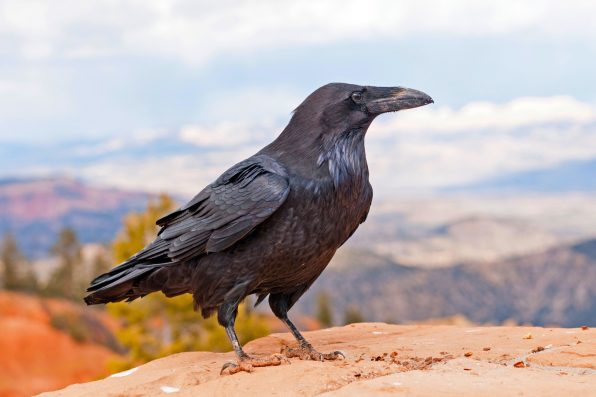The Fascinating History And Cognitive Abilities Of Ravens, One Of The Smartest Birds Soaring Through Our Skies

Often mistaken for their crow cousins, ravens are not just any ordinary bird. These glossy, black feathered friends are actually incredibly intelligent– with a knack for solving puzzles and even playing tricks.
Part of the Corvid family, ravens have sparked a ton of interest and curiosity across cultures and sciences due to their remarkable cognitive abilities. Let’s break down their intelligence, behavior, and the ecological significance that sets them apart as one of the smartest birds in the sky.
Origins And History
Ravens have a rich history that intertwines with human civilization. Fossil records indicate that ravens have existed for millions of years, with their ancestors dating back to the Miocene epoch.
Over time, they have spread across the Northern Hemisphere, adapting to diverse climates and landscapes.
In mythology and folklore, ravens also hold a prominent place. From being a symbol of wisdom and prophecy in Norse mythology to featuring in Native American tales as a trickster and creator figure, ravens have been both revered and feared, often seen as omens of change or guardians of the supernatural.
This deep historical and cultural significance of ravens reflects not only their widespread presence but also their enduring impact on human imagination and belief systems.
Ravens Have A Distinct Identity
Despite often getting confused with crows, ravens are distinct in their larger size, wedge-shaped tail, and deeper, resonating call.

wildnerdpix – stock.adobe.com – illustrative purposes only, not the actual raven
A key aspect that sets ravens apart is their brain size, which is among the largest of any bird species when compared to their body size.
This neurological advantage facilitates advanced cognitive functions, making ravens renowned for their problem-solving skills and adaptability in various environments.
Demonstrations Of Raven’s Advanced Intelligence
Ravens exhibit remarkable problem-solving abilities that are comparable to those of great apes. They use tools, a rare behavior among birds, utilizing sticks to retrieve inaccessible food.
In controlled experiments, ravens have even shown the ability to plan for future events, too, a cognitive skill once believed to be uniquely human. Plus, their problem-solving prowess is not just limited to food retrieval but extends to strategic social interactions, such as bartering and calling for allies during conflicts.
Complex Social Structures And Behaviors
Contrary to the solitary image of ravens portrayed in pop culture, these birds are highly social creatures.
They actually form long-lasting pair bonds and engage in intricate social dynamics within their groups.
Juvenile ravens tend to form playful gatherings, engaging in activities such as aerial acrobatics and object play, which are thought to contribute to their cognitive and social development.
Ravens Have A Language Of Their Own
Ravens also possess a diverse array of vocalizations, each serving a specific purpose, from mating calls to alarms signaling danger.
Their ability to mimic sounds, including human speech, highlights their complex auditory processing and vocal learning capacities. And these vocal skills are crucial for their social interaction and territorial behaviors.
Conservation And The Role Of Ravens In Ecosystems
Now, despite their adaptability, ravens still face challenges from habitat loss, climate change, and human-wildlife conflicts.
Their role as scavengers makes them vital for ecosystem health, aiding in nutrient recycling and controlling populations of smaller animals and insects.
So, conservation efforts are essential to protect these birds and maintain the ecological balance they help uphold.
Sign up for Chip Chick’s newsletter and get stories like this delivered to your inbox.
More About:Animals





